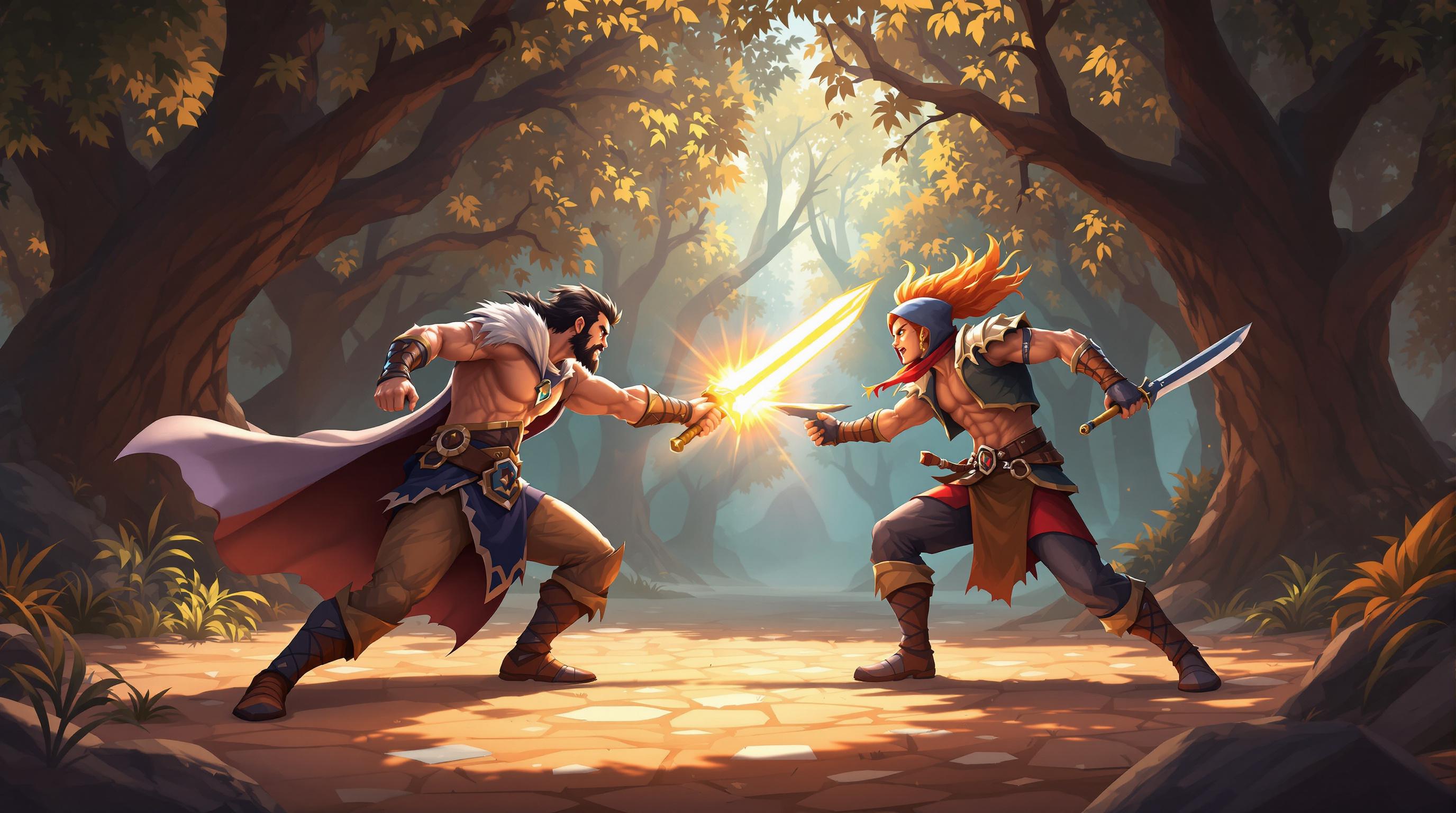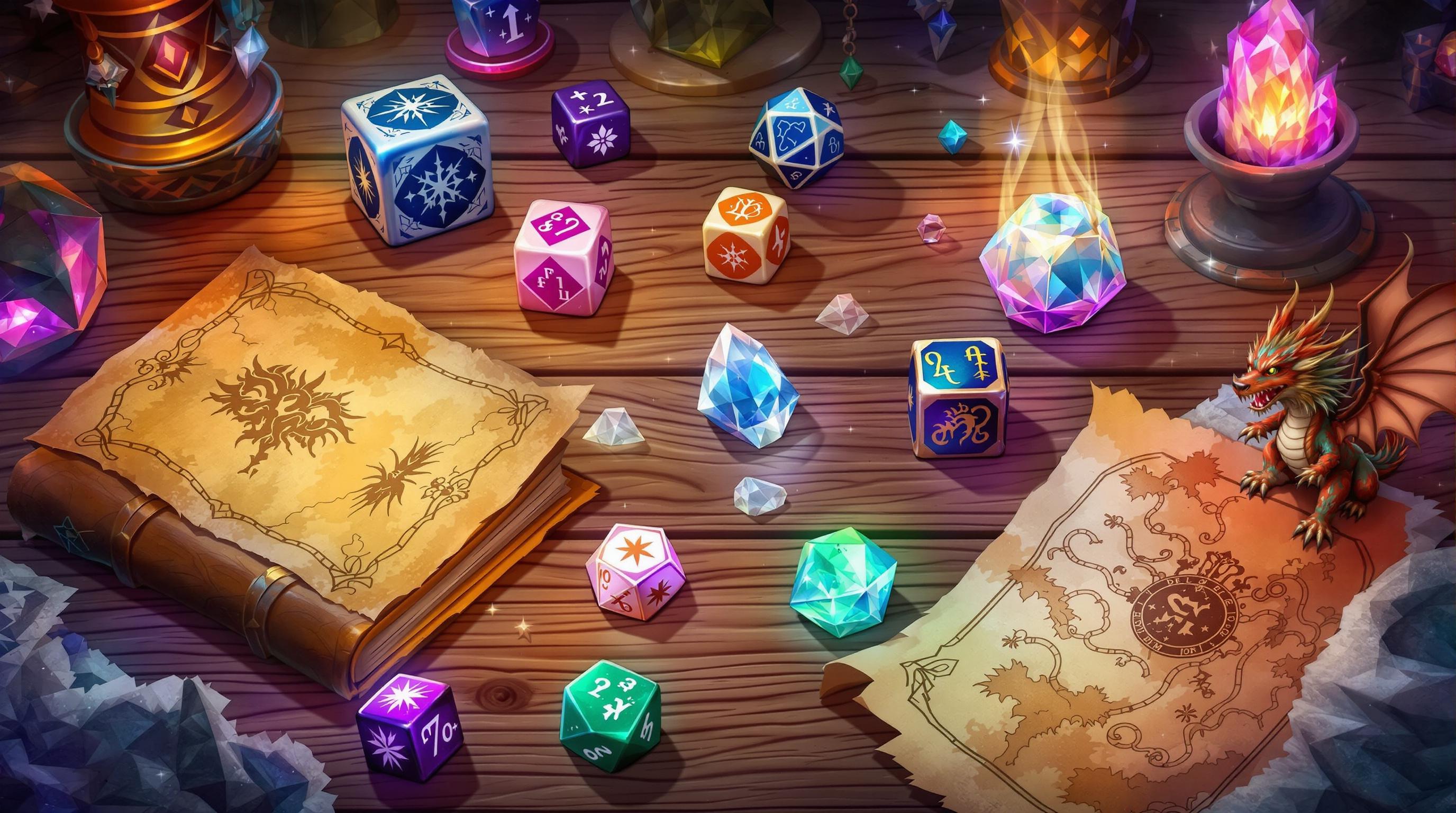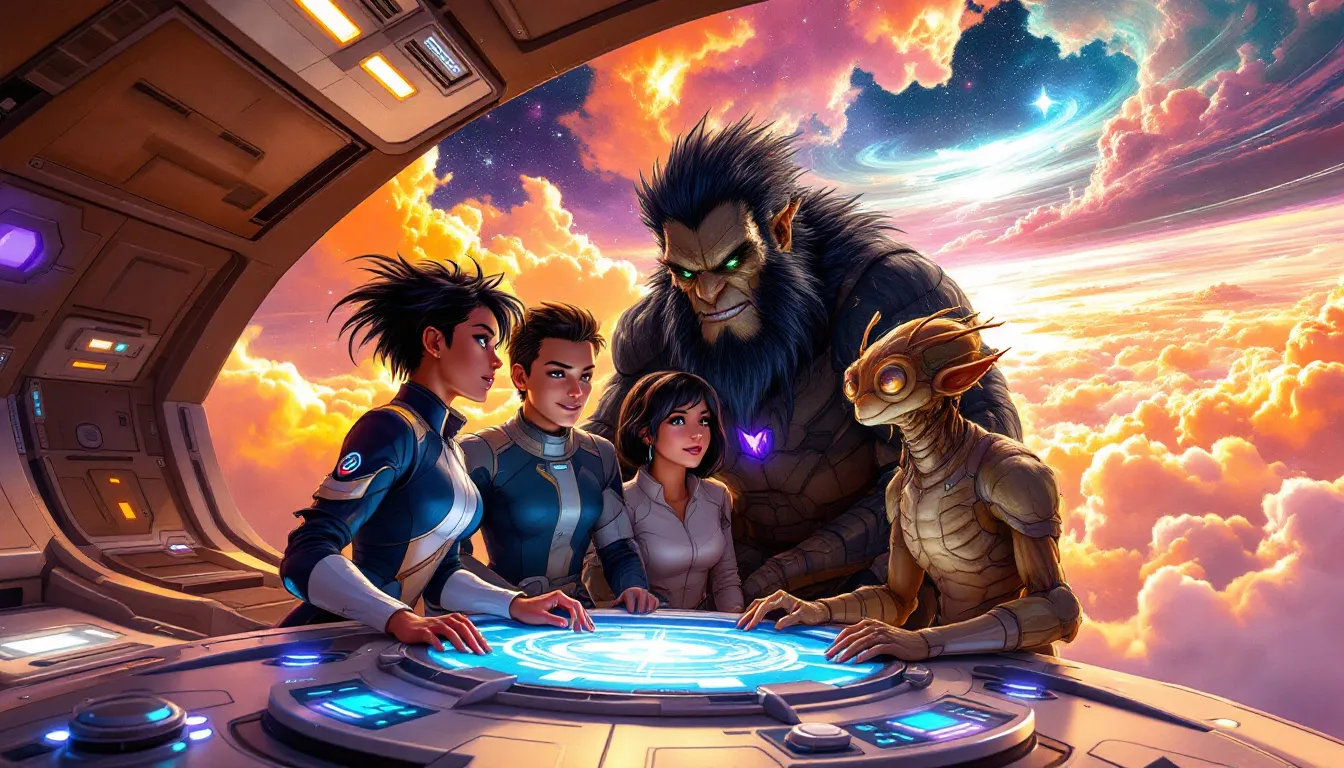Music can transform your tabletop RPG sessions, making them more immersive and emotionally engaging. The right playlist can set the mood, enhance storytelling, and make key moments unforgettable. Here’s a quick guide to get started:
- Why Use Music in RPGs?: Music builds suspense, highlights NPCs, enriches settings like taverns or ruins, and amplifies plot twists and victories.
- Key Emotions and Sounds: Use minor keys for tension, fast tempos for urgency, and ambient tracks for exploration. Contrast keeps players engaged.
- How to Organize Playlists: Categorize music by location, story moments, or intensity (low to high). Keep playlists short (5–10 tracks) for easy access.
- Timing and Volume Tips: Sync music with gameplay (e.g., combat or reveals) and keep volume low enough to support dialogue.
- Tools to Use: Platforms like Spotify and YouTube Music provide ready-made tracks, while tools like Audacity let you create custom soundscapes.
Start with simple playlists for combat, exploration, and character themes, then expand as needed. The right music can turn ordinary moments into unforgettable adventures!
Quick and Simple Method for Using Music in D&D
Music's Effect on RPG Sessions
Music can turn straightforward descriptions into immersive RPG experiences. Let’s look at how it enhances player engagement and sets the mood for your sessions.
Music and Player Engagement
Background music draws players deeper into the game by reducing distractions and creating a consistent audio backdrop. This helps players stay in character and react naturally to the unfolding story.
For instance, imagine your group exploring an ancient temple. A track with ambient reverb and soft chanting can instantly convey the sacred and mysterious vibe of the setting.
Music can also amplify key moments in gameplay, such as:
- Combat encounters: Fast-paced tracks with heavy percussion add intensity and urgency.
- Character interactions: Gentle tunes provide subtle support for roleplay without overshadowing dialogue.
- Exploration sequences: Atmospheric soundscapes bring environments to life.
- Plot twists: Silence followed by dramatic music can make big reveals even more impactful.
These techniques allow you to tailor music to specific emotions, which we’ll break down next.
Key Emotions in RPG Music
Certain musical elements are great at triggering specific emotions, making your storytelling more memorable. Here’s how different sounds influence player feelings:
| Musical Element | Emotional Effect | Example |
|---|---|---|
| Minor keys | Unease, tension | Approaching a dangerous encounter |
| Major keys | Hope, triumph | Celebrating a hard-earned victory |
| Slow tempo | Sorrow, mystery | Wandering through abandoned ruins |
| Fast tempo | Urgency, excitement | High-stakes chase scenes |
| Deep bass | Power, danger | Preparing for a boss fight |
| Light melodies | Discovery, wonder | Uncovering magical artifacts |
Contrast is key to keeping the emotional journey fresh. Switching between musical tones prevents players from feeling drained and keeps the energy high. This dynamic use of music highlights critical story moments and sustains engagement during longer sessions.
Creating RPG Playlists
Crafting playlists for RPGs helps set the tone and deepen the emotional connection to the story. By syncing music with narrative moments, you can amplify the player's experience and guide them through shifts in mood and action.
Choosing the Right Music
Instrumental tracks are ideal for supporting dialogue and storytelling without distracting players. Film and video game soundtracks are especially effective because they complement the narrative flow.
Here’s a quick guide to picking the right music:
| Music Element | Best Used For | Avoid |
|---|---|---|
| Instrumental | Combat, exploration, ambiance | Tracks with lyrics in the players' language |
| Ambient | Background atmosphere, quiet scenes | Sudden volume changes |
| Orchestral | Epic moments, boss battles | Complex jazz or experimental styles |
| Electronic | Modern or sci-fi settings | Bass-heavy dance music |
| Traditional | Cultural or historical settings | Modernized folk song covers |
Music for Scene Transitions
Organize tracks to match gameplay shifts and scene changes. Start with a base track for each setting, then add a few variations to match different moods. For instance, a tavern scene might evolve like this:
- Light, cheerful music for casual roleplay
- Subtle tension when rivals enter the scene
- High-energy action music if a fight breaks out
- A return to the original theme after the conflict resolves
This approach ensures smooth transitions and keeps the atmosphere consistent.
Structuring Your Playlist
To make music easy to access during gameplay, organize tracks into categories:
- By Location: Create collections for specific environments, such as forests or cities. Include variations like daytime exploration, nighttime ambiance, combat, or special discoveries.
- By Story Moments: Build playlists for key narrative events, such as character introductions, plot twists, victories, or tragedies.
- By Intensity: Group tracks by energy level to suit different gameplay moments:
- Ambient background (low intensity)
- Moderate engagement (medium intensity)
- High tension (intense action)
- Climactic drama (maximum intensity)
Keep each playlist short - 5 to 10 tracks is ideal. This ensures you can quickly find the right music without interrupting the flow of the game.
sbb-itb-b8b00a5
Using Music During Games
Music Timing
Sync your music to match the natural flow of the game, such as pauses in conversation or shifts in the story. Smoothly transition between tracks with a "crossfade" feature available in apps like Spotify or VLC Media Player. A short 3–5 second crossfade keeps the atmosphere intact.
| Story Element | Timing Cue |
|---|---|
| Combat Initiation | Start as players roll initiative |
| NPC Introductions | Play when players first notice the character |
| Location Reveals | Fade in as players approach the area |
| Plot Twists | Begin just before revealing key details |
| Victory Moments | Switch after the final blow or success |
Once your timing is set, fine-tune the volume to ensure the music complements the dialogue.
Volume Management
Keep the music at a level that supports, rather than overpowers, conversation. Aim for 20–30% of the speaking volume. For online sessions, tools like Voicemeeter Banana can help you control audio levels effectively.
Here’s a quick guide to setting volume for different scenarios:
| Scenario | Volume Level | Purpose |
|---|---|---|
| Ambient Background | 15–20% | Adds subtle atmosphere during roleplay |
| Action Sequences | 25–35% | Boosts energy without drowning out dialogue |
| Dramatic Moments | 30–40% | Enhances emotional impact in key scenes |
| Silent Scenes | 0% | Focuses attention on dialogue or builds tension |
Proper volume control ensures clarity while keeping players immersed.
Character and Location Themes
Assign specific musical themes to important characters and locations. A consistent motif can reinforce the emotional tone and make these elements more memorable.
For recurring locations, try these variations:
- Main Theme: The default version for everyday activity.
- Tension Version: A darker or more ominous arrangement for conflicts.
- Victory Version: A brighter, celebratory version for triumphant moments.
For characters, tailor their themes to reflect their roles:
- Villains: Use intense, dramatic instrumentals like brass or strings to signal danger.
- Allies: Go for warm, familiar melodies that inspire comfort and trust.
- Neutral Parties: Choose flexible themes that can shift between friendly and threatening tones.
These musical cues help set the mood and deepen the storytelling experience.
Music Tools and Resources
Take your RPG sessions to the next level with music platforms and tools designed to set the perfect mood.
Music Platforms
| Platform | Key Features | Best For |
|---|---|---|
| Spotify | Crossfade, collaborative playlists, offline mode | Long sessions and shared campaigns |
| YouTube Music | Huge library, user-uploaded content | Discovering rare game tracks |
| Apple Music | High-quality audio, smart playlists | Seamless iOS device integration |
| SoundCloud | Independent artist uploads, unique tracks | Finding one-of-a-kind music |
Look into storage limits and offline playback options to avoid interruptions during gameplay. Once you've got the basics covered, you can dive into creating custom soundtracks.
Music Creation Tools
- Audacity (Free): Offers multi-track recording and editing, built-in effects, and flexible export options. Perfect for layering sounds to match your game's atmosphere.
- GarageBand (Free for Mac/iOS): Features virtual instruments, a loop library, and real-time recording. Great for crafting immersive soundscapes.
These tools let you design personalized tracks to heighten the emotional impact of your RPG adventures.
TTRPG Games Directory
Check out the TTRPG Games Directory to explore games that align with the musical vibe you’re aiming for. The directory allows you to browse by category and even subscribe to their newsletter for fresh playlist inspiration.
Conclusion
Creating RPG playlists can take your gaming sessions to the next level by adding emotional depth and a sense of immersion. With the right music, you can amplify the storytelling and leave a lasting impression on your players.
Start with a small selection of tracks for key moments - like battles, big reveals, or calm interludes. Platforms such as Spotify and YouTube Music offer plenty of options to explore various genres and themes. Once you’re comfortable, you can expand your playlists to include character-specific themes or ambient sounds for different locations.
The right music can turn an ordinary scene into something unforgettable. Whether you’re using pre-made playlists or creating your own tracks with tools like Audacity, focus on aligning the music with the tone of your story. Smooth transitions and careful volume control are key to keeping players immersed without distracting from the narrative.
If you’re just getting started, try building these three types of playlists:
- Combat Tracks: Energetic music to set the tone for action-packed encounters.
- Exploration Ambiance: Subtle background tracks for traveling and discovery.
- Character Themes: Emotional pieces for pivotal character moments.
With some planning and practice, you’ll soon be crafting soundscapes that enhance your storytelling and leave your players talking about your game for weeks. The time you spend curating your music will make your RPG sessions more engaging and emotionally impactful.


